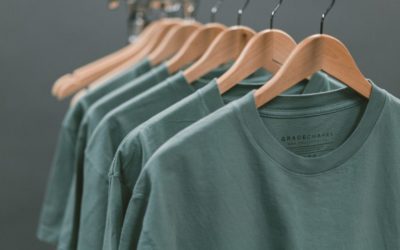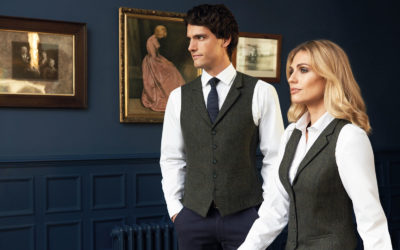One thing we get asked at times when we are putting together a staff uniform scheme is “what is the difference between a woven tie and a printed tie?” So we thought we would put together a short blog to explain and show the differences.
WOVEN TIES
A woven tie is the most popular choice for traditional tie designs. However, now that modern production techniques allow greater flexibility than before, fashion orientated designs are also achievable. With the choice of durable polyester and luxurious silk, a woven tie is still the preferred option for many companies and organisations.
The Weaving Process
Weaving is the textile art in which two distinct sets of yarns or threads, the warp and the weft, are interlaced with each other to form a fabric or cloth. Weaving is not the same as embroidery (we can leave that topic for another day!)The warp threads run length ways and the weft runs across from side to side. I remember learning this as a student and the simple way to remember is that “weft is left”The fabric is woven on a loom, a device for holding the warp threads in place while the weft threads are woven through them. The threads are carried on hooks, the raising and lowering of which determines whether the weft will lie above or below the warp. The sequence of raised and lowered threads is what creates the pattern. Once the fabric has been woven, it goes through various processes to finish the material.
PRINTED TIES
The dye printed tie allows greater freedom of design giving a modern and stylish look. Intricate designs with tones and tints are possible, with the ability to introduce many more colours than can be achieved by weaving. With this process you are not restricted to regular uniform patterns, as it is possible to create designs with a random appearance. With the choice of practical polyester or deluxe silk, a printed tie offers an unbeatable choice of both quality and design.
The Printing Process
Using the screen printing process, large screens are used to print special dyes which penetrate the fabric. Several print colours are possible, each one requiring a separate screen and each colour must be allowed to dry before the next one is applied. Shading and tints are possible, but as this is not 4 colour process, several screens may be required to achieve the effect. Bear in mind the more colours you have, the more screens you need, therefore costs will increase.As design is printed onto white fabric, the background colour must also be printed. When the background is to be a dark colour, it is usually necessary to print a keyline between the background and the motif to avoid the colours bleeding together.
One great thing about printed tie is as the dyes are mixed specially for each individual order, it is usually possible to achieve a close pantone match.Once the fabric has been printed, it goes through various processes to set the dyes and finish the material. When the design for the tie is created, it is laid out in the form of a template which includes cutting lines and these are then used as a guide to cut the pieces which will make up the tie, from the fabric.This type of printing is particularly intended for unique designs, which are usually produced in relatively small quantities. It is therefore ideally suited to custom designed ties and scarves.
If you are interested in bespoke ties or scarves for your organisation, in silk or polyester, woven or printed please do get in touch here. We offer a free design service for all of our tie designs.




